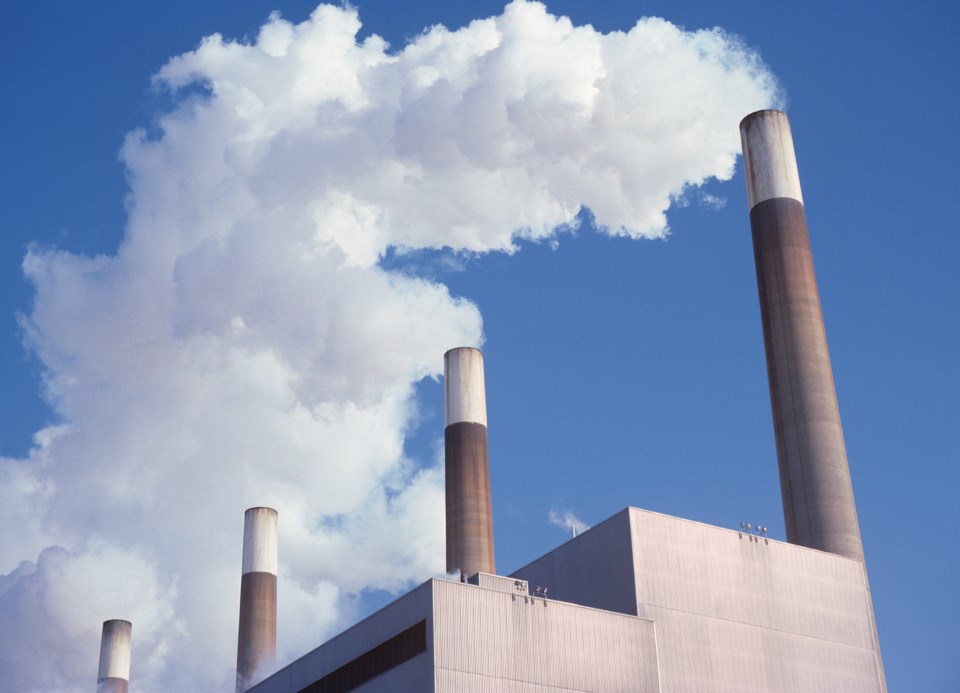When the federal government released the budget in April 2021, it proposed creating a .
But in January, shortly after the consultation period closed, more than the government to cancel its plan. The letter attracted significant , including pointed responses in favour of the tax credit from as well as and .
As a and one of the many academics opposed to this new tax credit, I’m concerned by the misleading arguments made by the tax credit’s supporters. The credit would divert millions of dollars from cheaper and safer climate solutions, and into fossil fuels. It’s time to clear the air about the reality — and the risks — of carbon capture as a means of climate policy.
Carbon capture demystified
Carbon capture, utilization and sequestration (CCUS) comes in two main types. The first seeks to from hard-to-decarbonize industries like oil and gas, steel and concrete before it is emitted to the atmosphere. The second seeks to capture dilute carbon from the air — called — after it has been emitted.
Both types bury captured carbon underground, and to do so. Historically, the “energy penalty” of CCUS — the additional energy required to operate CCUS per unit of energy generated by a power plant for basic consumption — was .
The purpose of CCUS is to keep carbon dioxide out of the air to slow global warming. Presently, however, , where the captured carbon is used to extract additional oil and gas from reserves that are otherwise impossible to mine.
For both types of capture to achieve their stated purpose, the additional energy used must not emit any carbon — it must come from renewable energy sources. If it weren’t being used here, this zero-carbon energy could otherwise be used to directly meet our energy needs, making and .
Prolonged fossil fuel production
The letter to Deputy Prime Minister and Minister of Finance Chrystia Freeland emphasized three points:
-
.
-
compared to non-polluting renewable energy.
-
Government subsidies to support CCUS will only in Canada and further delay the transition to decarbonization.
Supporters of subsidizing carbon capture responded by arguing:
-
.
-
The transition to cleaner technology won’t happen overnight.
-
According to the (IPCC), every scenario that keeps the planet from exceeding 1.5 C requires .
These responses are misleading. Global fossil fuel production must start declining immediately and steeply to limit long-term warming to 1.5 C, according to a recent report from the . Investing in unproven and expensive carbon capture technology , not reducing it.
The risks and costs of carbon capture
Investing even more public funding into carbon capture is throwing good money after bad. Canadian oil and gas companies are already receiving federal and provincial subsidies for carbon capture technology, including . Most of Canada’s existing carbon capture pilot projects have largely been funded by governments, including $865 million from Canada and Alberta for .
Carbon capture technology is but one carbon dioxide removal option, and because of its risks and costs, it’s not the preferred option either, according to the or in the broader academic literature on climate policy.
Because large-scale carbon dioxide removal faces multiple feasibility constraints, the IPCC recommends “significant near-term emissions reductions and measures to lower energy and land demand.” One of its pathways to limiting global warming to 1.5 C shows that — planting trees where there were previously none — is the only carbon dioxide removal option required. Under this precautionary scenario, carbon capture and sequestration of fossil-fuel emissions isn’t necessary.
Safe and sustainable emissions reductions
This approach of prioritizing emissions reductions and relying as little as possible on emissions removals has broad support from . , coupled with enhancing forest management and land-use planning, avoids the moral hazard of entrenching a business-as-usual approach to fossil-fuel use.
It also entails fewer trade-offs and offers multiple co-benefits, such as . Canada has room to improve on this front. Land use and forestry have historically been a sink for carbon emissions, but they have been a .
These lessons are especially relevant to Canadian climate policy. Climate Action Tracker, an independent think tank based in Germany, rates Canada’s climate policy as “highly insufficient overall,” with its current policies in line with a destructive 4 C of global warming. It notes that “for every step forward, Canada also seems to take two steps back.”
As Canada creates its under the , an important first step toward aligning its policies with the Paris Agreement’s 1.5 C temperature limit, Canada cannot afford to take another two steps back by further investing in an unproven “” and .
![]()
Jason MacLean does not work for, consult, own shares in or receive funding from any company or organisation that would benefit from this article, and has disclosed no relevant affiliations beyond their academic appointment.

